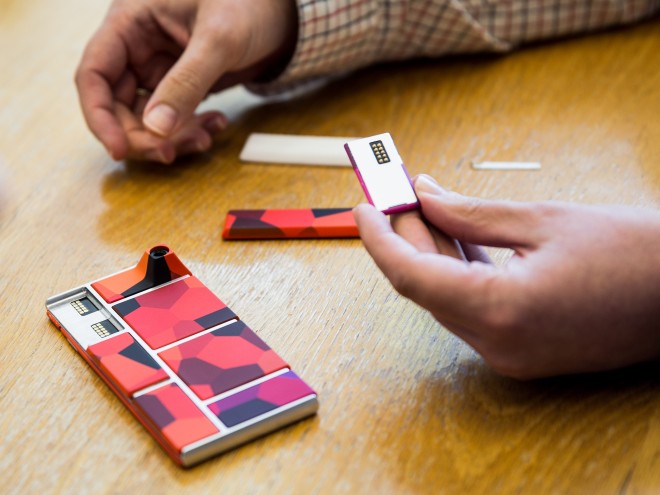
At the Project Ara Developer’s Conference in Santa Clara, California, the moment of unveiling was a bit of a letdown. When project lead Paul Eremenko got ready for the big reveal — finally showing off Google’s vision for a modular phone with working, user-interchangeable components — he had to dampen expectations from the enthusiastic crowd. “You should temper your applause,” he warned, explaining that the device had been damaged the previous day. “We did crack the screen, and the phone doesn’t quite boot.” A disappointment, sure, but it did little to actually temper anything.
Project Ara is Google’s attempt to reinvent the cellphone as we know it. Instead of a slab of glass and metal that you have no ability to upgrade, save for buying a new device, it’s an attempt to launch a phone where all of the main components are interchangeable via modules that click in and out, attaching via electro-permanent magnets. Despite being highly customizable, it will only come in three main sizes, helping to eliminate the kind of device fragmentation that currently plagues Android. Google plans to roll out a “gray model,” a very basic device that costs as little as $50, as well as higher-end handsets that could go for as much as $500 and up. The former will be released first — around this time next year if all goes according to plan — and will likely be a smaller, Wi-Fi-only version. This bare-bones model will be followed by the higher-end ones eventually. But Google’s initial objective is to ramp up a hardware ecosystem that moves at the same pace as the software it runs.
via Wired
Photo: Norman Chan/Tested.com





